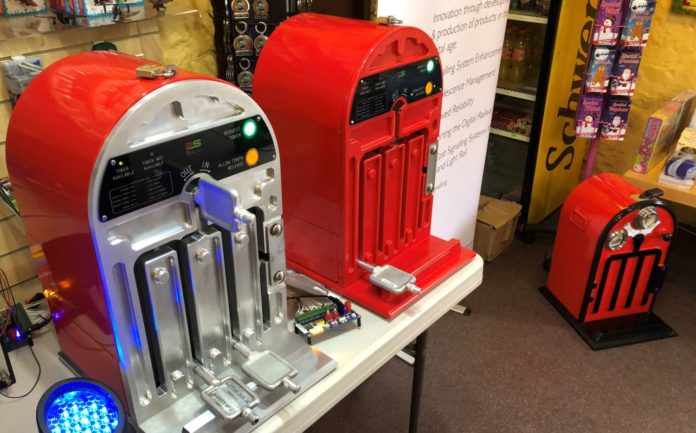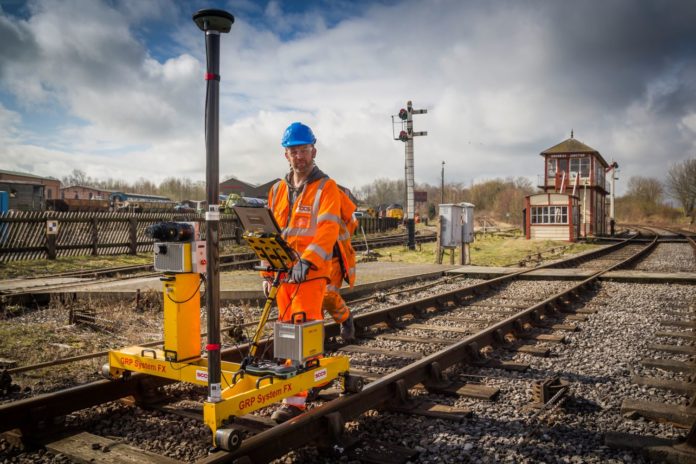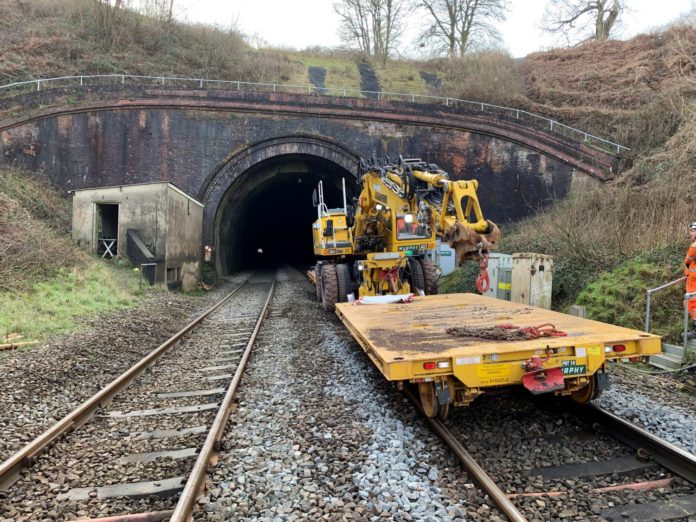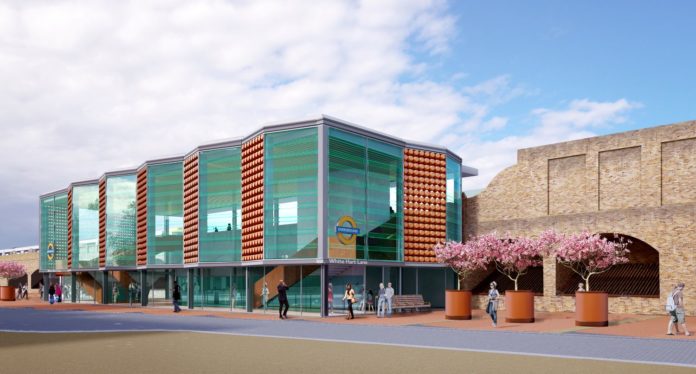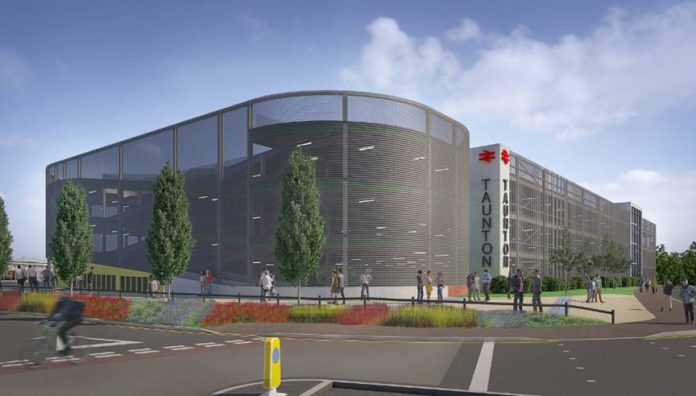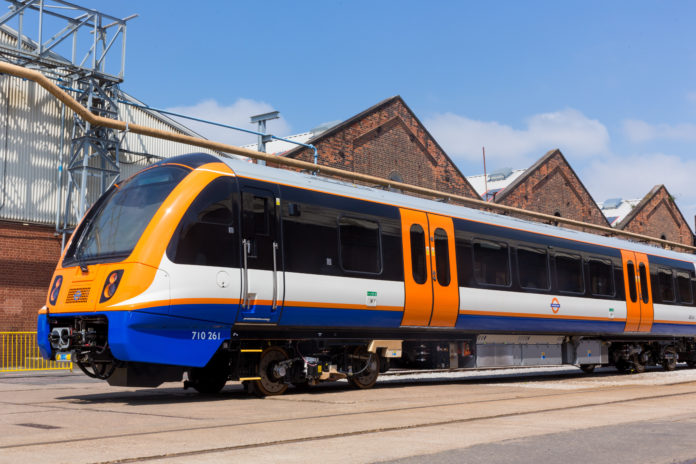For ten years, the innovation conference run by the Railway Industry Association (RIA) has gone from strength to strength and, in 2018, won the Trade Association Forum’s best conference award. This year, it attracted a record 288 delegates and took place at Telford – a particularly appropriate venue as the town is named after the innovative civil engineer Thomas Telford and incorporates the UNESCO world heritage site of Ironbridge, which is considered to be the birthplace of the industrial revolution.
The conference’s mix of presentations, pitches, workshops, table sessions and an exhibition area has much to offer for anyone with an interest in how the rail industry can benefit from emerging technologies. It also provided useful guidance for companies that wish to develop their products for use in the industry.
Last month, Rail Engineer reported on how the conference addressed ways in which the rail industry could the reduce its carbon footprint, both from new technologies and further electrification, which RIA’s electrification cost challenge report shows can be delivered in an affordable manner. This month we feature other aspects of the conference.

Research opportunities
Opportunities to develop new technologies were the subject of presentations and workshops led by the UK Rail Research and Innovation Network (UKRRIN) and Network Rail.
Professor Clive Roberts of the University of Birmingham explained how UKRRIN was established in April 2018 after being awarded a £28 million Government grant with £64 million co-funding from various industry partners. Through effective collaborations between industry and academia, UKRRIN aims to provide a step-change in innovation to significantly improve UK rail performance by accelerating new technologies from research to market.
UKRRIN is led by the University of Birmingham, which also provide its digital centre of excellence. Other centres of excellence are for rolling stock (Universities of Huddersfield, Newcastle and Loughborough) and infrastructure (Universities of Southampton, Sheffield, Nottingham and Loughborough, and also Herriot-Watt University in Edinburgh). Testing facilities are provided by Network Rail, Transport for London and the Quinton rail technology centre.
Innovations already being developed by UKRRIN include verification of electrical clearances to reduce electrification bridge construction clearances (University of Southampton and Network Rail), in-vehicle acceleration data to detect track degradation (University of Huddersfield and Siemens) and Hydroflex, the UK’s first hydrogen train (University of Birmingham and Porterbrook).
Clive encouraged industry, particularly small-to-medium size enterprises (SMEs), to engage with UKRRIN’s centres of excellence. He acknowledged concerns about intellectual property rights and advised that this is retained by the company. He also advised that Universities can apply to become a new UKRRIN centre of excellence, partner or affiliate.
Network Rail’s CP6 research and development portfolio is a £357 million plan, of which £245 million is part of the CP6 settlement with the remainder to come from third-party funding. This is a 33 per cent increase on the CP5 settlement of £200 million plus £68 million third-party funding. However, the ORR requires this to be focused on Network Rail requirements rather than the more industry-wide requirements of the Rail Technical Strategy.
In addition, Network Rail has €39 million research funding over a seven-year period from Shift2Rail, Europe’s largest ever public-private research and development partnership. Despite Brexit, this funding is committed, although it is not clear whether there is be any future funding.
For CP6, Network Rail has five research programmes, as shown in the table. These are supplemented by the outputs from the Shift2Rail research programmes on trains, control systems, infrastructure, IT solutions and freight. Network Rail is also a client member of i3P – a platform for cross-infrastructure industry innovation that currently has 10 client organisations and 16 tier 1 contractors.

MADE pitches
As he opened the conference, RIA’s chief executive, Darren Caplan explained that its theme was “MADE in Britain” to reflect RIA’s focus on ‘Growing a sustainable rail industry in uncertain times’. MADE stands for Materials, Automation, Data and Energy, all of which are key areas requiring innovation. Later in the conference, companies were given the chance to promote such innovations in three-minutes pitches to the audience.
Examples of innovation in materials were Mott MacDonald’s use of a densified wood laminate to produce cost effective, low maintenance and visually sensitive overhead line structures; Dura Composites’ low maintenance, lightweight, modular GRP units that can be quickly laid on existing platforms to improve the platform train interface and the lightweight cable management sleeper produced by Oxford plastics which can be installed without disconnecting cables.
Automation in inventory management and delivery requests was stressed in Unipart Rail’s pitch for its SmartServe service, which guarantees supply availability. The automation of surveying featured in pitches by the Severn Partnership, on the use of Fugro rail-mounted laser scanners, and from Plowman Craven on using drones to conduct surveys, to an accuracy of 5mm, from which BIM models are produced and data handed over to asset owners.
Using data to precisely determine location was the subject of a pitch from Machines with Vision. This technique uses a ground-truth map which provides a unique fingerprint of the ground surface to determine an exact position. Using apps to collect and process data featured in presentations from Opinsta of a defect app for efficient maintenance reporting and from Bombardier on its goJoe app, which creates, gathers and processes data to generate passenger information.
Graffica’s pitch explained how, using its simulation platform, geographic and operation data can provide a virtual environment for capacity modelling and assessing the impact of various operational scenarios such as infrastructure and timetables changes. Fast in-train data transfer through a 10Gbit/s train ethernet backbone was described by LPA Connection Systems, which highlighted its copper ethernet switch.
An energy efficient, very light railcar was the subject of WMG’s pitch, which explained the concept of an innovative, lightweight diesel-battery hybrid power train with an 18-tonne tare mass that is able to carry 100 passengers at 100km/h. G-volution’s pitch offered reduced CO2 and particulate emissions from its dual-fuel technology, which also offers lower energy costs with the reduced cost of gas fuel and so can pay for itself in a few years.
Project innovation

HS2’s chief executive, Mark Thurston has no doubt that innovation is essential if HS2 is to provide the required service at an affordable cost. This particularly applies to project construction, when the project will be mobilising the supply chain at an unprecedented scale. Furthermore, productivity in the construction sector is poor. Figures from the office of national statistics show that construction output per worker is only 10 per cent greater than in 1997, compared with increases of 43 and 65 per cent for the production and manufacturing sectors.
Like Network Rail, HS2 is also a client member of the i3p infrastructure industry innovation platform, of which Mark is a co-chair. This was established in 2016 and is based on Crossrail’s innovation programme and has four strategic themes: digital transformation; manufacturing construction; life cycle performance and non-technology elements.
Mark stressed that innovation “has to be in the company’s DNA” and concerns people behaviours and collaboration. For this reason, HS2 is committed to early contractor involvement to integrate design development and construction planning from the start of the project. HS2 also has an innovation hub to collate and progress new ideas.
HS2 has also encouraged innovation through a ‘hackathon’ that produced innovations for smart infrastructure using augmented virtual reality, detecting employee fatigue and illness as well as enabling HS2 to be a good neighbour.
As well as construction innovations, HS2 is seeking new ideas to improve passenger experience, as described in features on HS2 trains in the last two issues of Rail Engineer. This includes the “step free from street to seat” requirement.
In a recently announced innovation, HS2 announced plans to heat 500 new homes near its Old Oak Common station to reduce their carbon footprint by more than a fifth. This is to be done by using air source heat pumps to convert warm air from the tunnel crossover box into hot water distributed to the homes through insulated pipes.

Another strategic rail link under development is East West Rail (EWR), which is creating a rail link between Oxford and Cambridge. Following the opening of phase 1 between Oxford and Bicester in 2015, phase 2 is currently being developed. This is the construction of 75 route-kilometres of new railway, to link Bicester, Aylesbury, Milton Keynes and Bedford, for which target costs must be submitted in May.
This is being delivered by the EWR Alliance which consists of Network Rail, Atkins, Laing O’Rourke and VolkerRail. Its director, Dominic Baldwin, explained how this is modelled on the collaborative Staffordshire alliance which constructed a new flyover at Norton Bridge. This engaged the supply chain at the early GRIP3 stage and functions as a single entity with risks and rewards equally shared. The aim is to create a highly motivated team focused on delivering value for money outcomes.

Alex Heward of Laing O’Rouke is the EWR alliance’s innovation manager. He has a dedicated budget and is supported by five innovation champions who promote innovation in accordance with the alliance’s structured process to encourage and develop new ideas. EWR has 30 needs statements for which solutions are sought. To date, this has resulted in 225 ideas submitted by the project team.
Examples of ‘innovations being progressed’ by EWR include shell abutments, which will save eight weeks in the programme and a 50 per cent reduction in site labour hours, fibre-reinforced footbridge decks increase lifespan by 25 per cent at no extra capital cost, and sleeper lateral resistance plates which save £45 per sleeper.
Alex advised that this innovative approach had saved £5 million to date and that EWR is keen to engage with the wider industry to disseminate its savings and learn of other industry initiatives. Although he stressed the importance of project innovation, it was accepted that this generally needs to be done at the early stages of the project, due to the risk from changes during project implementation.
Beyond the industry
RIA’s innovation conference always features thought-provoking innovative practice from outside the rail industry. This year was no exception, with presentations from the aerospace sector on an initiative to reduce software costs and timescales as well as one on innovation in the wider construction industry.
A presentation from Andrew Hawthorn from Altran and Mike Bennett from Rolls Royce described SECT-AIR (Software Engineering Costs and Timescales – Aerospace Initiative for Reduction) which is a £10 million project, part-funded (50 per cent) by Innovate UK. It is a pan-industry initiative which involves ten aerospace companies, of which Rolls Royce is the lead participant, together with the universities of Oxford, York and Southampton.
SECT-AIR aims to significantly reduce rising software development costs and timescales that dominate the development costs of new products which, if not addressed, will result in unacceptable delays introducing new products, especially as Rolls Royce is currently developing multiple new engines.
As an example of costs, the software for an engine control unit typically has 300,000 lines of code at a cost of about £100 per line. One such engine is the Ultrafan which, unlike the Trent engine it will replace, will have a power gearbox to control fan speed, which is anticipated to have double the electronics and software. Its planned introduction from 2025 may be at risk unless software development timescales can be reduced.
SECT-AIR aims to exploit world-leading research to improve the software design, production and the verification process, the later accounting for most of the time and cost. Solutions include avoiding rework through better systems specification, improved handover between stages and automated verification. No doubt this initiative will offer valuable lessons for the rail industry.
Software is also an important aspect of innovation in the more traditional construction industry which, as Mark Thurston noted, doesn’t have a good productivity record. In his presentation, Peter Kirk, managing director specialist services at Balfour Beatty, explained what his company is doing to change this. Before doing so, he emphasised the importance of first getting the basics right, including effective communication and fostering a culture of trust and collaboration.
In developing innovations, Balfour Beatty considers what is needed now, in the near and in the far future, to which it devotes roughly 70, 20 and 10 per cent of its efforts. The company’s aim is to introduce new technologies to reduce workforce site time by 25 per cent by 2025. This includes 4D planning, artificial intelligence (AI) and industrialised construction.
The planning and constructability benefits of a 4D BIM model were evident from the model shown of the five-year London City Airport development programme, which provided detailed 3D views of the numerous construction stages throughout this programme.
An example of this in the rail industry is the use of AI to train the pattern-recognition software that is used to detect track defects from numerous photographs which are taken at high speed by the New Measurement Train. In recent trials, using AI in this way has significantly reduced the number of false positives.

In contrast, a good example of the industrialisation of construction is the provision of a one-gigawatt high-voltage direct-current interconnector in the Channel Tunnel, the world’s first such installation in a live rail tunnel environment. The project uses numerous off-site and near-site techniques, the most impressive being a specially built 500-metre works train to enable the installation of twin 320kV cables in the five-hour working window per week where access is available.
Peter is certain that such innovations must be the future of construction. However, he cautioned that the need to upskill and develop staff for such innovations should not be under estimated. He finished his presentation with a futurist video of a human free construction site in 2050, where people instead plan and support construction from safe environments. Whether this will be the future remains to be seen. Peter’s view is that, although it’s not possible to foresee the future, it is important to have a vision and work towards it.
Keynotes
As well as presentations on specific issues, keynote presentations emphasised key points and made it clear what had to be achieved.
Valerie Layan, Schneider Electric’s transportation segment president, reminded those present that they were now in the fourth industrial revolution, as artificial intelligence changes industrial operations. The increasing use of technologies such as robotics, autonomous vehicles and quantum computing is driven by huge amounts of interconnected complex data.
As an illustration of the exponential growth of data, global internet traffic in 1997, 2007 and 2017 was respectively 60 petabytes (1015), 54 exobytes (1018) and 1.1 zetabytes (1024). Valerie advised that less than ten per cent of data is currently used.
She noted that digitisation accelerates business disruption, giving examples of how Uber and Netflix provide more responsive, less expensive services than their predecessors. Rail businesses needed to be aware of both the threats and opportunities from the fourth industrial revolution. In respect of benefits, Valerie considered that rail businesses should be able to reduce energy costs by 25 per cent through smart energy management, increase operational efficiency by 20 per cent using big data, and reduce ownership cost by 15 per cent through condition-based maintenance and targeted life extension.
Transport for London’s (TfL) head of transport systems engineering Claire Porter explained how TfL intended to use emerging technologies to deliver innovative solutions to support the Mayor’s transport strategy. This has three aspects, which are:
Healthy streets and healthy people with targets of 20 minutes active travel per person by 2041, three million fewer daily car trips by 2041 and zero emissions by 2050;
A good public transport experience including better use of the Thames, improving bus speeds by 10-15 per cent and reducing rail and underground overcrowding by 10-20 per cent;
New homes and jobs with high density, mixed use places in well-connected locations.
She reflected that the first aspect was particularly important, as 2,000 people a year are killed on London’s roads and a recent report had estimated that the capital’s poor air quality results in 9,000 deaths a year.
To deliver the engineering support for this strategy, TfL has recently amalgamated its 1,500 engineers into one organisation that centralises support for such things as safety, telecoms and infrastructure, with dedicated systems support for vehicles, power, track and road & rail traffic control systems.
To promote innovation, TfL has its own innovation portal, open both to employees and members of the public. In partnership with the London Transport museum, its Innovate TfL programme encourages innovation by engaging with a diverse population at an early age to ask them for innovative solutions to a real TfL challenge.
TfL is also following Network Rail’s practice of producing challenge statements and now has a standards-challenge process, which RIA helped to develop.

Network Rail’s new chief executive Andrew Haines is clear that the company must change. It has lost trust and is insufficiently responsive to its customers. Asset performance must improve, product approval is too slow and, although projects have delivered good infrastructure, passengers have suffered as this was not linked to train plans.
He recognised that, all too often, such people find themselves frustrated by the structure and processes that stop them doing a good job. Often, collaborative working only happens because people put a lot of what the company tells them to do to one side and find a better way of doing things for themselves.
For these reasons the company must change and reorganise so that it is closer to its customers.
Network Rail must also innovate, so it is encouraging early contractor involvement and challenges to standards. It is also devolving its research programme, which in the past had been too-centrally led. Andrew expects technology to be introduced quickly, but considers that clarity on best practice is required. He also wanted the industry to respond with solutions to Network Rail’s challenge statements.
RIA’s innovation conference certainly offered solutions, although these need to be matched to business need. As always, this was a stimulating event with a good mix of formal conference activities and informal networking that is worthy of its Conference of the Year accolade. Definitely a date for the diary next year, when the conference will move to June – keep an eye on the RIA website for more details.



